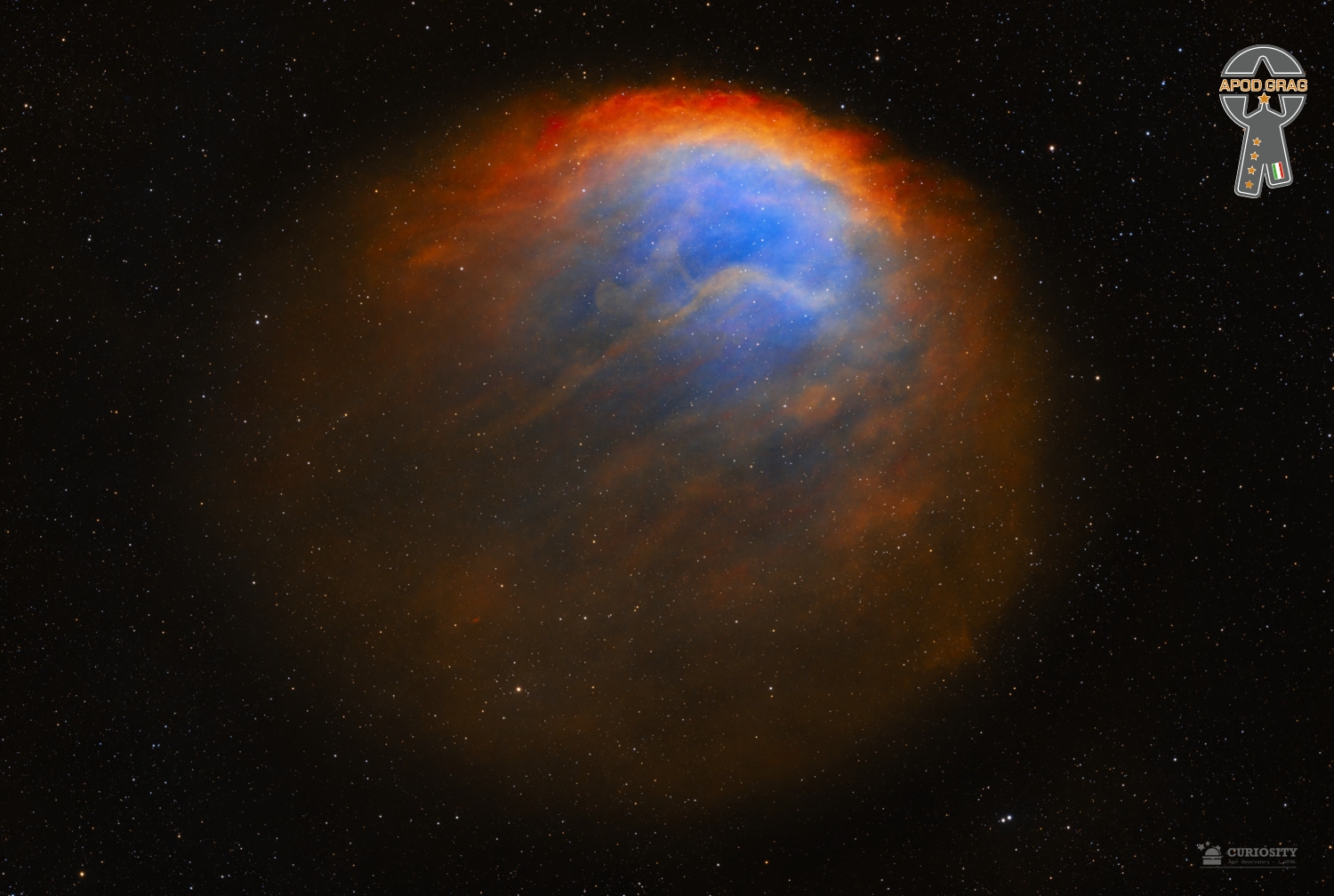Cosmo Sh2-216
This image captures Sh2-216, the closest known planetary nebula to Earth, located at a distance of approximately 129 parsecs (424 light-years). With a diameter of 1.6° in the sky, Sh2-216 is one of the largest and oldest planetary nebulae known. Its vast, faint shell spans nearly 10 light-years, representing the ejected outer layers of its progenitor star, which is the white dwarf WD 0439+466.
Something interesting about this region is how Sh2-216 interacts with the interstellar medium (ISM). The nebula’s upper rim glows brightly, marking the point where the expanding shell meets the ISM. This interaction compresses and shapes the nebular gas, forming complex filamentary structures visible in H-alpha emissions. These structures are influenced by both the ISM magnetic field and the dynamics of the nebular expansion.
To capture this faint PN, 55 hours of exposure have been required using A f4,4 refractor at 414mm focal length. The image has been taken during October, November and December 2024 from the Curiosity observatory located in Àger (Catalonia), under a B3 sky.
